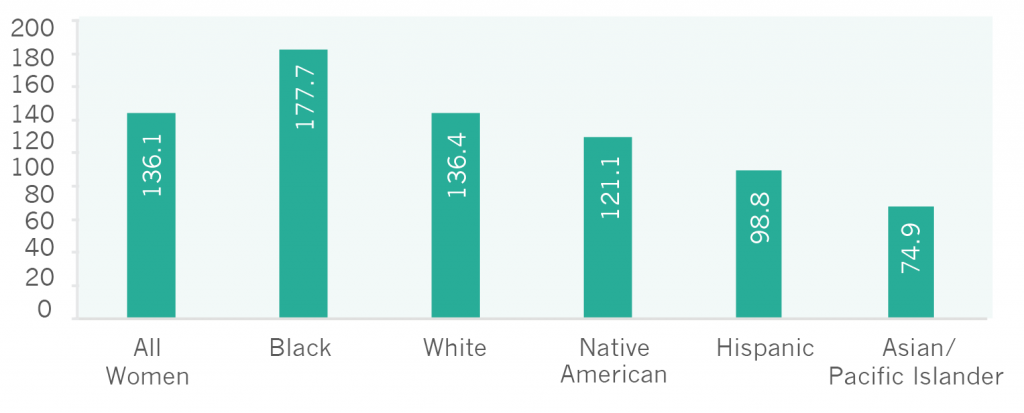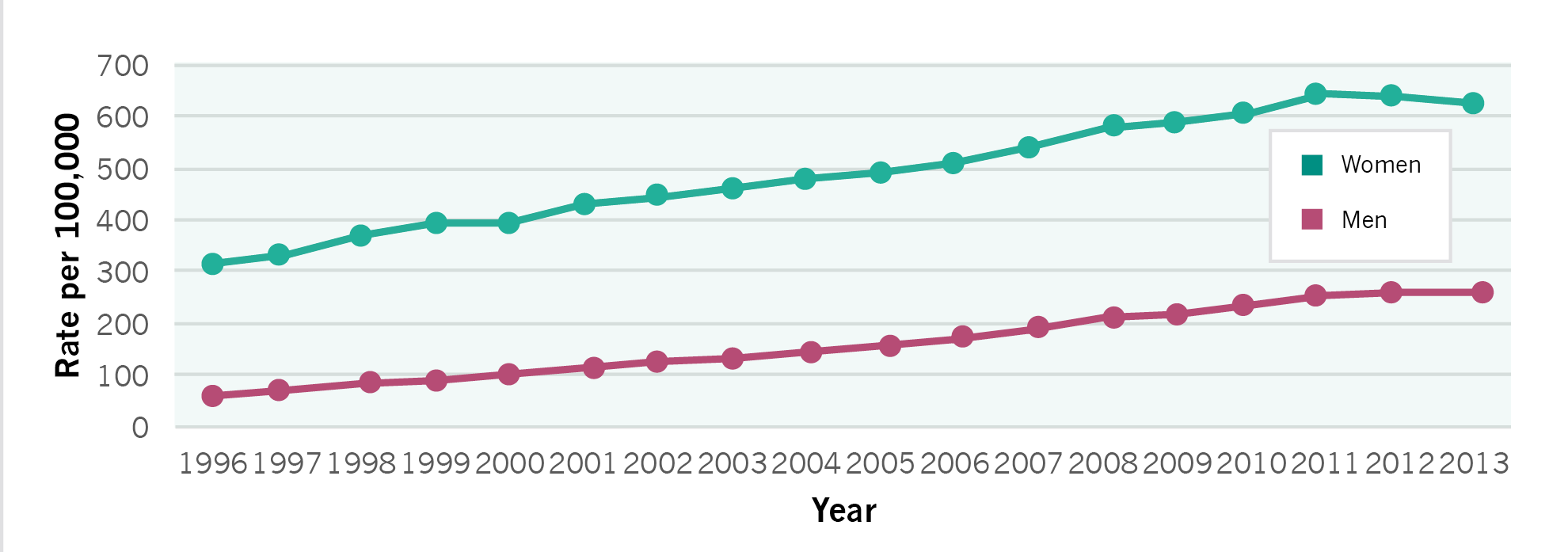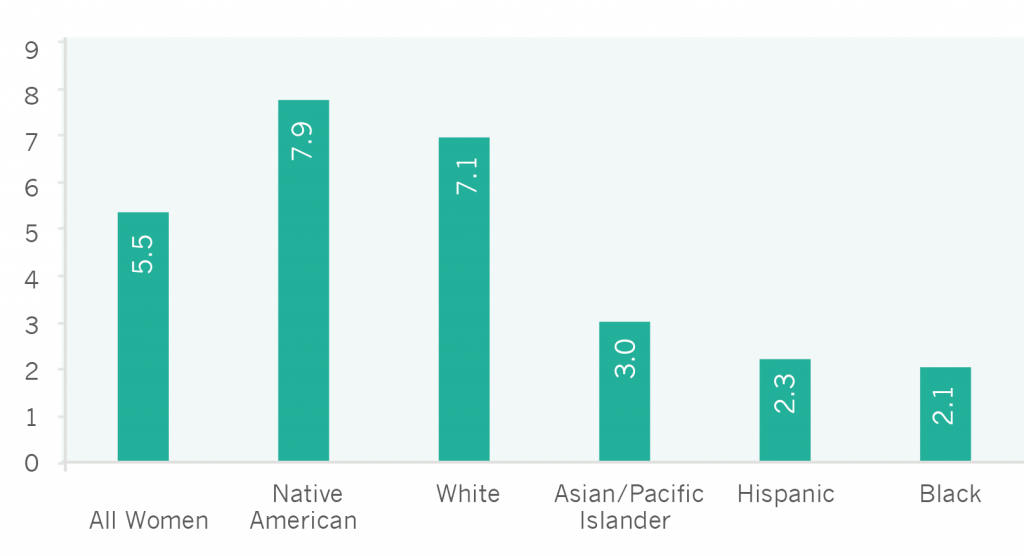
Health & Well-Being
In the United States overall, women’s health status has improved in some areas and declined in others. Women’s mortality rates from heart disease, lung cancer, and breast cancer have decreased since the publication of IWPR’s 2004 Status of Women in the States report, as has the incidence of AIDS among female adolescents and adults. Women’s incidence of chlamydia and diabetes, however, have increased (IWPR 2004; Table 6.1). In addition, the average number of poor mental health days per month, suicide mortality rate, and average number of days per month of limited activities have also gone up for women.
View All State Rankings See Key Indicators| Best | Worst |
|---|---|
| 1. Minnesota | 51. Mississippi |
| 2. Hawaii | 50. Alabama |
| 3. North Dakota | 49. Louisiana |
| 4. Utah | 48. District of Columbia |
| 5. Nebraska | 47. Arkansas |





